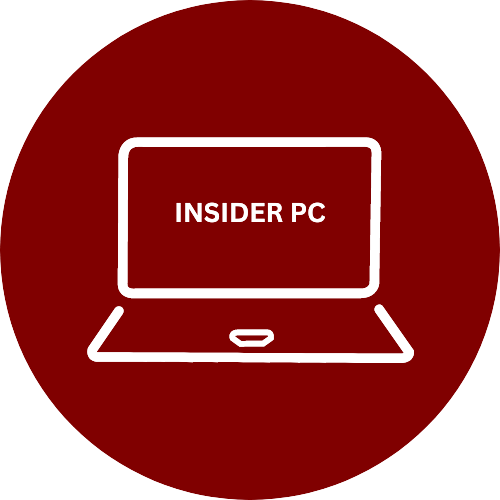In today’s fast-paced world, technology is advancing at a remarkable pace, and it’s transforming the way we live. The concept of a smart home, powered by the Internet of Things (IoT), has become a reality for many. It’s not just a trend; it’s a revolution that’s changing the way we interact with our living spaces. In this article, we will explore the world of smart homes and how IoT is making our homes more efficient, secure, and convenient.
Understanding IoT and Smart Homes
What Is IoT?
A network of connected objects that communicate with one another online is known as the Internet of Things, or IoT. These devices can range from everyday objects like thermostats, refrigerators, and lights to more sophisticated gadgets like security cameras and voice assistants. They collect data, exchange information, and can be controlled remotely.
How IoT Powers Smart Homes
IoT is the backbone of smart homes. It enables devices to be interconnected, making it possible for them to work together seamlessly. For example, your smart thermostat can adjust the temperature based on your preferences and the current weather, while your smart lights can dim or change color to create the perfect ambiance.
Smart Home Components
Smart Lighting
You can regulate your lights’ brightness, colour, and even their schedule thanks to smart lighting solutions. You can set the mood for any occasion, save energy, and enhance security with these systems.
Thermostats and Climate Control
Smart thermostats enable you to remotely control your home’s temperature, learn your preferences, and optimize energy consumption, resulting in cost savings and a more comfortable living environment.
Security Systems
IoT-based security systems offer features like remote monitoring, motion detection, and alerts sent to your smartphone. They provide peace of mind and a heightened sense of security.
Voice Assistants
Voice assistants like Amazon’s Alexa and Google Assistant make it easy to control various smart devices with your voice, simplifying tasks and enhancing convenience.
Benefits of Smart Homes
Convenience
Smart homes offer unparalleled convenience. With a simple voice command or tap on your smartphone, you can control various aspects of your home, from adjusting the thermostat to playing music.
Energy Efficiency
IoT devices help reduce energy waste. They can automatically adjust settings to save energy, leading to lower utility bills and a smaller carbon footprint.
Enhanced Security
Smart security systems provide real-time alerts and remote access, giving you peace of mind whether you’re at home or away.
Accessibility
Smart homes can be a game-changer for individuals with disabilities. They offer greater accessibility and control over one’s environment.
Challenges of Smart Homes
Cost
One of the primary challenges of smart homes is the initial cost of purchasing and installing IoT devices. Long-term savings, though, can make up for these expenses.
Compatibility
Ensuring that all your devices work seamlessly together can be a challenge, as different manufacturers may use different protocols.
Privacy and Security Concerns
Connected devices can be vulnerable to hacking. Protecting your smart home from potential threats is crucial.
IoT and Home Automation
How IoT Powers Home Automation
Home automation involves the automatic control of various devices and systems within your home. IoT technology is the driving force behind this, making it possible for your home to anticipate your needs.
Examples of Automated Systems
Home automation can include tasks like automatically adjusting your blinds based on the time of day, turning on your coffee maker in the morning, and even watering your plants when the soil is dry.
Choosing the Right IoT Devices
Compatibility
When selecting IoT devices, it’s essential to ensure they are compatible with your existing systems. This compatibility ensures a seamless experience.
User-Friendliness
Consider the ease of use for each device. A user-friendly interface can significantly enhance your smart home experience.
Long-Term Viability
Invest in devices and platforms that have a promising future. Staying up to date with software updates and compatibility is vital.
Installation and Setup
DIY vs. Professional Installation
Decide whether you want to install your devices yourself or hire professionals. DIY installation is cost-effective, but professional installation ensures accuracy.
Network and Device Configuration
Properly configuring your network and devices is crucial for seamless operation. Make that the Wi-Fi network is reliable and safe.
Smart Home Apps and Platforms
Controlling Your Smart Home
Smart home apps and platforms allow you to control your devices, set schedules, and receive notifications. These apps centralize control and monitoring.
Integration with Other Devices
Select platforms that offer integration with other smart devices, enhancing the potential of your smart home.
Future Trends in Smart Homes
Artificial Intelligence Integration
AI integration is set to play a more significant role in smart homes. Devices will pick up on user preferences and change as necessary.
Health and Wellness Monitoring
IoT will be used to monitor health and wellness, providing valuable insights and alerts for users and healthcare providers.
Sustainability
Smart homes will contribute to sustainability efforts by optimizing energy consumption and reducing waste.
Conclusion
The Smart Home Revolution is here to stay. With IoT technology, we can transform our homes into efficient, secure, and convenient living spaces. Embrace this revolution and enjoy the benefits of a smart home.




